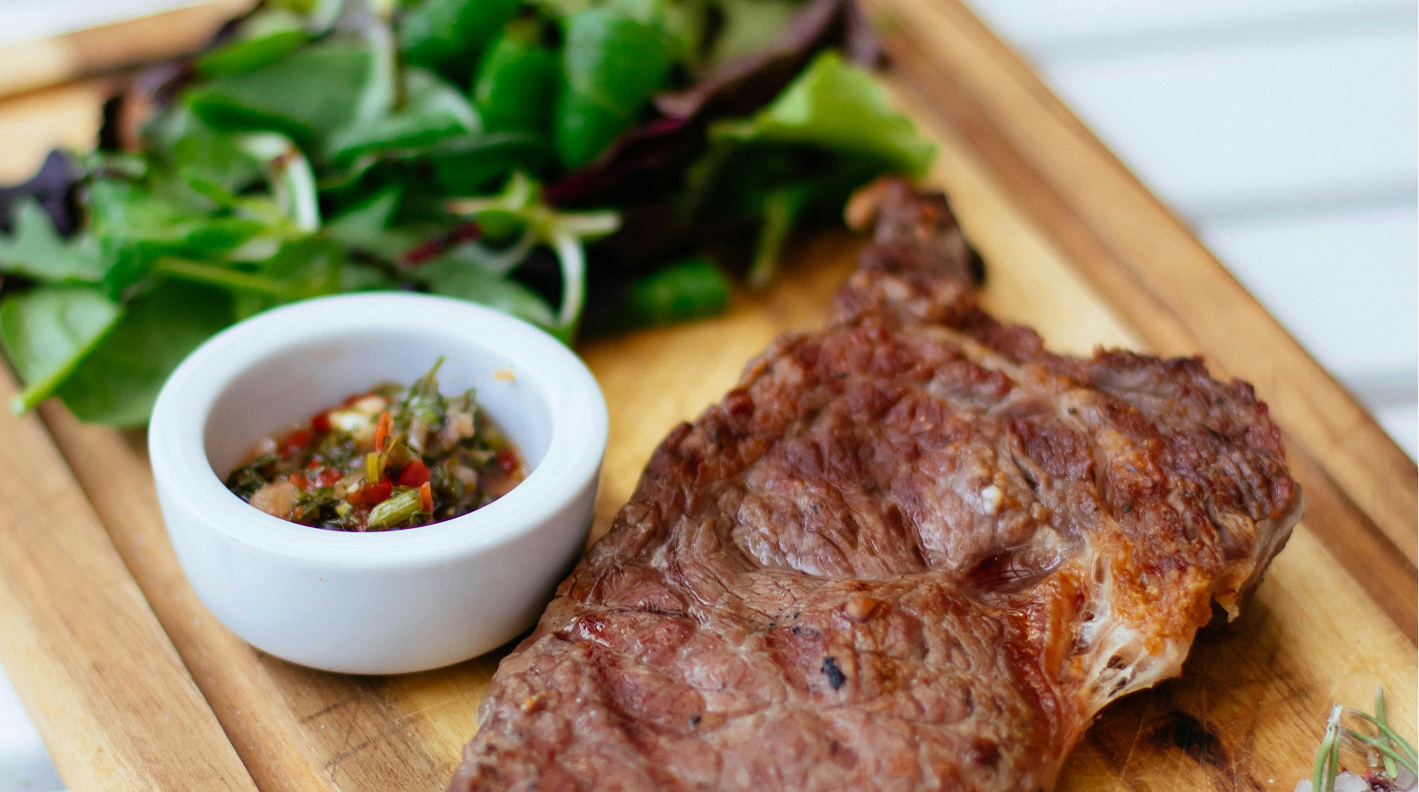The many benefits of time-restricted eating

Key takeaways
- TRE is an eating pattern where meals are restricted to a specific time window (e.g., 8-10 hours) while fasting the rest of the day, aligning with circadian rhythms. It differs from calorie-restrictive intermittent fasting, focusing on when you eat rather than solely what or how much.
- TRE may promote weight loss, improve heart health and insulin sensitivity, enhance metabolic function, and help manage chronic diseases. It can also support better energy levels, reduce inflammation, and improve sleep quality if aligned with your natural body clock.
- Start with a 12-hour eating window and gradually shorten it. Align your meal timings with your routine and choose nutrient-rich meals high in protein, healthy fats, and low-GI carbs. Timing workouts after your eating window opens can help maintain energy levels during exercise.
Time-restricted eating (TRE), the practice of compressing calorie intake into a shorter feeding window, originated from research by Dr Satchin Panda in 2012 [1].
To avoid confusion, TRE is different from intermittent fasting (calorie restriction), but the two practices are often popularly combined. It’s now so popular that people might ask if you’re 16/8 or 18/6, but the more important question may be around meal timing.
Read as we dive into the world of TRE, explain its potential benefits and side effects, and how you can incorporate it into your lifestyle.
What is time-restricted eating?
Time-restricted eating, sometimes referred to as time-restricted feeding, is an eating pattern where you have all your meals and snacks within a specific time window — say 6, 8 or 10 hours — and fast for the rest of the day.
The belief with TRE is that when you eat is just as important as what you eat and that aligning your eating times with your body's circadian rhythm (its natural 24-hour clock) can lead to several health benefits. Let's dive into these next.
Reaping the benefits of time-restricted eating
Although the effects of TRE can vary from person to person, this eating approach has been linked to several health benefits:
May help you lose weight
TRE can help you eat less, and research has found that when healthy adult men limit their food consumption to a 10-hour window, their daily calorie intake drops by about 20% [6].
This caloric restriction can help you lose body weight. In fact, multiple studies on both normal-weight and overweight individuals who limited eating to a 7–12-hour window observed weight loss of up to 5% within 2–4 weeks [7][8][9].
Keep in mind, though, that TRE alone won't necessarily lead to weight loss. If you tend to reach for high-calorie foods during your feeding window, you may end up eating at maintenance, or even over.
If you're on a body recomposition journey, we recommend choosing high-protein, lower-calorie foods, and using a food diary to keep track of your caloric intake.
May improve heart health
Clinical trials found that 4 weeks of limiting food intake to 8 hours can lower LDL cholesterol (the bad kind) by more than 10% in both men and women [9]. This can improve your cardiovascular health by reducing your risk of heart disease.
Plus, when you fast, you give your body time to repair and reduce inflammation, which is a key factor in cardiovascular disease.
We should mention that other research on 8-hour eating windows didn't find the eating approach to improve cholesterol levels, so the results aren't consistent [10].
May lower blood sugar
Eating within a shorter window gives the body longer breaks from food, in turn improving insulin sensitivity. TRE can also help prevent energy spikes and crashes by aligning with your body's circadian clock.
Finally, while you fast, your body goes from burning glucose to burning stored fat for energy, which can also regulate blood sugar levels.
May help prevent and manage chronic diseases
TRE can improve metabolic syndrome, reducing risk factors for several health conditions, like diabetes, heart disease, and stroke.
One way it does so is by improving insulin sensitivity, as well as promoting fat burning (visceral fat, in particular), regulating your autonomic nervous system, increasing HDL cholesterol (the good kind), and helping your body repair inflammatory markers.
The goals of time-restricted eating
There are generally 3 types of goals for time-restricted eating.
The first is that you're looking for a productivity hack of having more energy — and that is probably why you'd opt for morning fasting, to optimise for increased cortisol and noradrenaline (a hormone that helps regulate your body's "fight or flight" response).
The second goal is to achieve a leaner body composition and better metabolic health, where TRE is used as a long-term practice.
The last is longevity, where you want to optimise more for cellular maintenance and renewal. If this is your goal, a 24-36-hour practice can be more beneficial.
Are there any risks?
TRE can have some side effects, including hunger/cravings, low energy, headaches (from dehydration or low blood sugar), digestive issues, difficulty sleeping (if you fast too close to bedtime), and mood changes.
TRE may also not be suitable for everyone, particularly people with a history of eating disorders, people with certain medical conditions (such as kidney disease or low blood pressure), or people on medication that needs to be taken with food or at specific times.
Intermittent fasting vs time-restricted eating
The popular, mainstream TRE protocol is to ‘fast through the morning and feast into the evening’, likely because of lifestyle preferences (evening social lives), ease of adherence (suppressed morning appetite), and the epinephrine buzz during a morning fast.
This involves eating your maintenance level of calories or the amount of calories your body naturally needs and compressing that into a short period.
And while most people fast in the morning and feast in the evening, you may be going to bed without having fully digested the food you've eaten, which in turn, could disrupt your sleep quality.
However, emerging research suggests that early time-restricted feeding (eTRE) is superior to the popular delayed eating window (dTRE) as described above [2].
The diurnal cycles of our endocrinology likely explain these benefits and it was the overarching premise of Dr Panda that we should eat in alignment with our circadian rhythm.
As a corollary, there’s a plethora of studies showing poor health outcomes among shift workers who experience extreme dysregulation of circadian rhythms [3].
While time-restricted eating is a type of intermittent fasting, the principles are slightly different to the popularised version.
TRE involves having breakfast in the morning, perhaps after you've had some morning sunlight exposure and a bit of movement, and then having your final meal of the day as a light dinner and as early as possible in the day, so you're going to bed more fully digested, which helps to maximise your sleep quality.
Another type of intermittent fasting involves more calorie restriction, which is where you might engage with the 5:2 way of eating, where you have 5 days of consuming your normal calories and 2 days of consuming around half of your calories, let's say.
Rounding out these fasting methods is the concept of fasting for longer periods like a day, 2 days, 3 days, 7 days.
Choosing eating windows
Determining the right eating window for you will depend on several factors, including your lifestyle and goals. When planning your meal timings:
- Choose an eating window that aligns with your daily routine
- Start with a 12-hour window and gradually shorten it
- Consider when you prefer to work. out (AM vs PM) to ensure you've got enough energy to perform
- Listen to your body and how it reacts to fasting
Here's an example: Perhaps you're active at 6 am, have breakfast at 9 am, and consume your last meal at 4 pm.
If you have dinner plans, you may snack at 4 pm to ensure you keep dinner light (ideally, lean protein plus leafy greens — polyphenols have circadian benefits) so that you're more fully digested before bed.
Studies suggest that total protein intake (grams in a day) is more important than timing or regularity of protein intake [4][5]. So, it doesn't matter that you don't have a protein shake every couple of hours.
The intention should not be to make our social lives conform to our nutrition habits; it should be to find solutions within our lifestyle and constraints — something we can assist you with at Compound.
We’re dedicated to helping you live better, for longer. Our Body Transformation Programme combines medical treatments, prescriber support and personalised guidance to help you not just lose weight but completely transform your body and health for life.
- Breakthrough medication: Lose up to 21% of your body weight in 72 weeks with once-weekly, clinically proven treatment. It keeps you feeling fuller for longer, so eating less feels natural. Pair them with the Compound Code to lock results in for good.
- Compound Code: Our medication creates opportunity — Compound helps you seize it. Our proven system makes your treatment work harder. The Compound Code builds the muscle, energy, and fitness that medication alone can't deliver. Our holistic approach transforms not just how you look, but how you feel and function daily. So when you eventually finish treatment, your results don't disappear with it.
What to eat during time-restricted eating
The saying 'eat breakfast like a king, lunch like a prince and dinner like a pauper' is helpful when it comes to TRE. For breakfast, we recommend sticking with a dish filled with protein, healthy fats, and, if possible, some lower GI carbohydrates.
This means steering clear of things like cereal and toast. Having toast with butter and Vegemite or jam in the morning can spike your blood sugar and may lead to a blood sugar crash later in the morning.
You might also like to start your day with a bit of bone broth, maybe with some olive oil if you're particularly hungry. This is going to help quell hunger and is also packed with collagen and glycine, amongst other things, which positively impacts sleep quality.
If you're eating out for lunch, opt for a bowl of some sort and ask for no sauce and added protein. This means steering away from a sandwich or a wrap.
To make it super simple for both lunch and dinner, a good rule of thumb is to have lean protein with some leafy greens or other vegetables and some lower GF carbohydrates.
Can time-restricted eating affect your workouts?
We mentioned before that one thing to consider when choosing your eating windows is your exercise routine.
This is because working out on an empty stomach doesn't work for everyone — you may not have enough energy (especially if you're planning a high-intensity session) and you may experience a temporary drop in performance as your body adjusts to your new eating pattern.
We recommend you time your workouts after your eating window opens, make sure you're consuming enough protein and complex carbs, and don't push your body too far past its limits (if you feel weak or overly fatigued during a workout, that's your cue to stop).
Time-restricted eating (TRE), the practice of compressing calorie intake into a shorter feeding window, originated from research by Dr Satchin Panda in 2012 [1].
To avoid confusion, TRE is different from intermittent fasting (calorie restriction), but the two practices are often popularly combined. It’s now so popular that people might ask if you’re 16/8 or 18/6, but the more important question may be around meal timing.
Read as we dive into the world of TRE, explain its potential benefits and side effects, and how you can incorporate it into your lifestyle.
What is time-restricted eating?
Time-restricted eating, sometimes referred to as time-restricted feeding, is an eating pattern where you have all your meals and snacks within a specific time window — say 6, 8 or 10 hours — and fast for the rest of the day.
The belief with TRE is that when you eat is just as important as what you eat and that aligning your eating times with your body's circadian rhythm (its natural 24-hour clock) can lead to several health benefits. Let's dive into these next.
Reaping the benefits of time-restricted eating
Although the effects of TRE can vary from person to person, this eating approach has been linked to several health benefits:
May help you lose weight
TRE can help you eat less, and research has found that when healthy adult men limit their food consumption to a 10-hour window, their daily calorie intake drops by about 20% [6].
This caloric restriction can help you lose body weight. In fact, multiple studies on both normal-weight and overweight individuals who limited eating to a 7–12-hour window observed weight loss of up to 5% within 2–4 weeks [7][8][9].
Keep in mind, though, that TRE alone won't necessarily lead to weight loss. If you tend to reach for high-calorie foods during your feeding window, you may end up eating at maintenance, or even over.
If you're on a body recomposition journey, we recommend choosing high-protein, lower-calorie foods, and using a food diary to keep track of your caloric intake.
May improve heart health
Clinical trials found that 4 weeks of limiting food intake to 8 hours can lower LDL cholesterol (the bad kind) by more than 10% in both men and women [9]. This can improve your cardiovascular health by reducing your risk of heart disease.
Plus, when you fast, you give your body time to repair and reduce inflammation, which is a key factor in cardiovascular disease.
We should mention that other research on 8-hour eating windows didn't find the eating approach to improve cholesterol levels, so the results aren't consistent [10].
May lower blood sugar
Eating within a shorter window gives the body longer breaks from food, in turn improving insulin sensitivity. TRE can also help prevent energy spikes and crashes by aligning with your body's circadian clock.
Finally, while you fast, your body goes from burning glucose to burning stored fat for energy, which can also regulate blood sugar levels.
May help prevent and manage chronic diseases
TRE can improve metabolic syndrome, reducing risk factors for several health conditions, like diabetes, heart disease, and stroke.
One way it does so is by improving insulin sensitivity, as well as promoting fat burning (visceral fat, in particular), regulating your autonomic nervous system, increasing HDL cholesterol (the good kind), and helping your body repair inflammatory markers.
The goals of time-restricted eating
There are generally 3 types of goals for time-restricted eating.
The first is that you're looking for a productivity hack of having more energy — and that is probably why you'd opt for morning fasting, to optimise for increased cortisol and noradrenaline (a hormone that helps regulate your body's "fight or flight" response).
The second goal is to achieve a leaner body composition and better metabolic health, where TRE is used as a long-term practice.
The last is longevity, where you want to optimise more for cellular maintenance and renewal. If this is your goal, a 24-36-hour practice can be more beneficial.
Are there any risks?
TRE can have some side effects, including hunger/cravings, low energy, headaches (from dehydration or low blood sugar), digestive issues, difficulty sleeping (if you fast too close to bedtime), and mood changes.
TRE may also not be suitable for everyone, particularly people with a history of eating disorders, people with certain medical conditions (such as kidney disease or low blood pressure), or people on medication that needs to be taken with food or at specific times.
Intermittent fasting vs time-restricted eating
The popular, mainstream TRE protocol is to ‘fast through the morning and feast into the evening’, likely because of lifestyle preferences (evening social lives), ease of adherence (suppressed morning appetite), and the epinephrine buzz during a morning fast.
This involves eating your maintenance level of calories or the amount of calories your body naturally needs and compressing that into a short period.
And while most people fast in the morning and feast in the evening, you may be going to bed without having fully digested the food you've eaten, which in turn, could disrupt your sleep quality.
However, emerging research suggests that early time-restricted feeding (eTRE) is superior to the popular delayed eating window (dTRE) as described above [2].
The diurnal cycles of our endocrinology likely explain these benefits and it was the overarching premise of Dr Panda that we should eat in alignment with our circadian rhythm.
As a corollary, there’s a plethora of studies showing poor health outcomes among shift workers who experience extreme dysregulation of circadian rhythms [3].
While time-restricted eating is a type of intermittent fasting, the principles are slightly different to the popularised version.
TRE involves having breakfast in the morning, perhaps after you've had some morning sunlight exposure and a bit of movement, and then having your final meal of the day as a light dinner and as early as possible in the day, so you're going to bed more fully digested, which helps to maximise your sleep quality.
Another type of intermittent fasting involves more calorie restriction, which is where you might engage with the 5:2 way of eating, where you have 5 days of consuming your normal calories and 2 days of consuming around half of your calories, let's say.
Rounding out these fasting methods is the concept of fasting for longer periods like a day, 2 days, 3 days, 7 days.
Choosing eating windows
Determining the right eating window for you will depend on several factors, including your lifestyle and goals. When planning your meal timings:
- Choose an eating window that aligns with your daily routine
- Start with a 12-hour window and gradually shorten it
- Consider when you prefer to work. out (AM vs PM) to ensure you've got enough energy to perform
- Listen to your body and how it reacts to fasting
Here's an example: Perhaps you're active at 6 am, have breakfast at 9 am, and consume your last meal at 4 pm.
If you have dinner plans, you may snack at 4 pm to ensure you keep dinner light (ideally, lean protein plus leafy greens — polyphenols have circadian benefits) so that you're more fully digested before bed.
Studies suggest that total protein intake (grams in a day) is more important than timing or regularity of protein intake [4][5]. So, it doesn't matter that you don't have a protein shake every couple of hours.
The intention should not be to make our social lives conform to our nutrition habits; it should be to find solutions within our lifestyle and constraints — something we can assist you with at Compound.
We’re dedicated to helping you live better, for longer. Our Body Transformation Programme combines medical treatments, prescriber support and personalised guidance to help you not just lose weight but completely transform your body and health for life.
- Breakthrough medication: Lose up to 21% of your body weight in 72 weeks with once-weekly, clinically proven treatment. It keeps you feeling fuller for longer, so eating less feels natural. Pair them with the Compound Code to lock results in for good.
- Compound Code: Our medication creates opportunity — Compound helps you seize it. Our proven system makes your treatment work harder. The Compound Code builds the muscle, energy, and fitness that medication alone can't deliver. Our holistic approach transforms not just how you look, but how you feel and function daily. So when you eventually finish treatment, your results don't disappear with it.
What to eat during time-restricted eating
The saying 'eat breakfast like a king, lunch like a prince and dinner like a pauper' is helpful when it comes to TRE. For breakfast, we recommend sticking with a dish filled with protein, healthy fats, and, if possible, some lower GI carbohydrates.
This means steering clear of things like cereal and toast. Having toast with butter and Vegemite or jam in the morning can spike your blood sugar and may lead to a blood sugar crash later in the morning.
You might also like to start your day with a bit of bone broth, maybe with some olive oil if you're particularly hungry. This is going to help quell hunger and is also packed with collagen and glycine, amongst other things, which positively impacts sleep quality.
If you're eating out for lunch, opt for a bowl of some sort and ask for no sauce and added protein. This means steering away from a sandwich or a wrap.
To make it super simple for both lunch and dinner, a good rule of thumb is to have lean protein with some leafy greens or other vegetables and some lower GF carbohydrates.
Can time-restricted eating affect your workouts?
We mentioned before that one thing to consider when choosing your eating windows is your exercise routine.
This is because working out on an empty stomach doesn't work for everyone — you may not have enough energy (especially if you're planning a high-intensity session) and you may experience a temporary drop in performance as your body adjusts to your new eating pattern.
We recommend you time your workouts after your eating window opens, make sure you're consuming enough protein and complex carbs, and don't push your body too far past its limits (if you feel weak or overly fatigued during a workout, that's your cue to stop).
- https://www.cell.com/cell-metabolism/fulltext/S1550-4131(12)00189-1?_kx=p3YMvQBX-mhsz5KpduV0l1t1ipdPUomqXSAbuS6H10E%3D.MHU8j4
- https://pubmed.ncbi.nlm.nih.gov/29754952/
- https://pubmed.ncbi.nlm.nih.gov/36437004/
- https://www.ncbi.nlm.nih.gov/pmc/articles/PMC3381813/?_kx=p3YMvQBX-mhsz5KpduV0l1t1ipdPUomqXSAbuS6H10E%3D.MHU8j4
- https://pubmed.ncbi.nlm.nih.gov/26764320/
- https://pubmed.ncbi.nlm.nih.gov/9363296/
- https://nutritionj.biomedcentral.com/articles/10.1186/1475-2891-11-69
- https://pubmed.ncbi.nlm.nih.gov/23702187/
- https://pubmed.ncbi.nlm.nih.gov/11203145/
- https://pubmed.ncbi.nlm.nih.gov/17374948/





